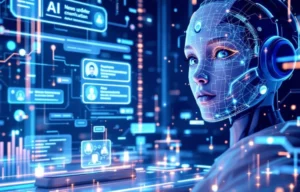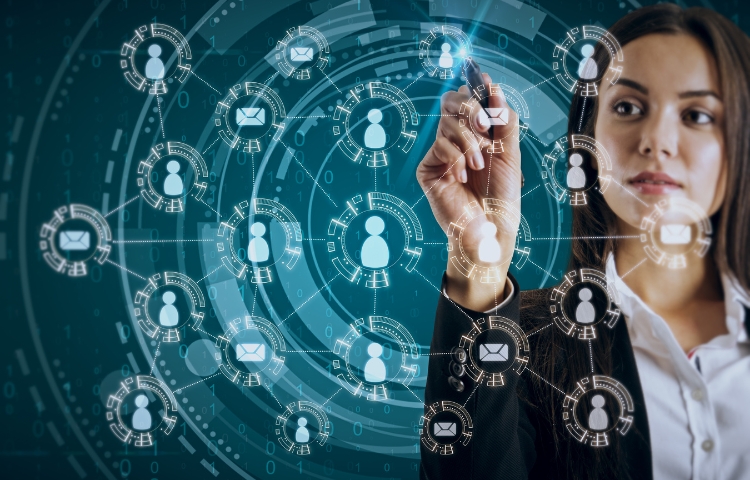

The role of human resources (HR) departments are also evolving as businesses continue to adopt new technologies. Today, HR professionals have access to a wealth of data and analytics tools to help them make better decisions and improve overall performance. At the forefront of this transformation are big data and artificial intelligence (AI), which are revolutionizing HR in several ways, including but not limited to the following:
Investing in big data and AI-driven tools can lead to considerable cost savings and productivity. Additionally, companies can gain a competitive advantage as they become more agile and efficient. Exploring the potential use cases and applications of big data and AI in the context of core HR functions can illuminate these technologies’ value. Let’s take a closer look at these areas and some real-world examples.
Big data and AI are helping HR departments streamline their recruitment process and find the best candidates for open positions. For example, Hilton Worldwide Holdings uses AI-powered chatbots to answer questions from job seekers, helping the company to identify and engage with top candidates more effectively. Additionally, many companies use big data and AI to analyze candidate data from job boards, social media, and other sources to identify the best candidates for open positions. By using machine learning algorithms to analyze large datasets, companies can identify patterns and trends that are difficult or impossible for humans to discern. This information lets HR departments quickly identify top candidates and make informed hiring decisions. Ultimately, AI can reduce time-to-hire and ensure that companies can attract top talent. By leveraging big data and AI, HR departments can gain a competitive advantage in the hiring process and ensure that they can hire the best candidates for open positions.
Once talent is onboard, big data and AI can help HR departments improve employee engagement and retention by identifying factors contributing to employee satisfaction and proactively addressing potential issues. For example, IBM uses predictive analytics to identify employees at risk of leaving the company and take action to retain them. According to IBM, the AI can predict with 95% accuracy and has saved $300 million in employee retention expenses. By analyzing employee data such as survey responses, performance reviews, and other metrics, HR departments can identify patterns and trends to understand employee satisfaction and engagement. With this information, HR can take targeted measures to improve retention and ensure employees are happy and productive. HR departments historically manually analyze employee feedback, performance data, and other relevant metrics to gain valuable insights into employee satisfaction and take targeted measures to improve retention. However, by leveraging big data and AI, HR departments can identify potential issues before they become significant problems and take proactive steps to address them. Technology can help companies retain their top talent and improve the company’s overall performance.
AI-powered software can help HR departments provide real-time employee feedback. For example, General Electric uses an AI-powered app named “PD@GE” to provide continuous feedback to employees and track their progress over time. By using machine learning algorithms to analyze employee data such as performance metrics, project completion rates, and other relevant information, HR departments can gain valuable insights into employee performance and provide targeted feedback to help employees improve. A continual feedback loop fosters better working relationships between managers and employees and efficient, productive teams.
Big data and AI can help HR departments comply with legal and regulatory requirements. By analyzing employee data such as email communications, access logs, and other relevant information, HR departments can identify potential compliance risks and take proactive measures to mitigate them. Such actions can help companies avoid costly legal and regulatory issues and comply with all relevant laws and regulations.
Fostering and providing a safe workplace environment is a critical business priority. AI can help companies reduce accidents and injuries, minimize downtime, and ensure their employees are safe and healthy. By analyzing data such as safety reports, maintenance records, and other relevant information, HR departments can identify potential safety risks and take proactive measures to mitigate them.
Moreover, AI technologies are enabling cutting-edge innovation. AI-driven systems can develop models that predict the likelihood of accidents or dangerous situations occurring in the workplace. Swire Coca-Cola HK, part of the Coca-Cola bottling system, implemented Intenseye technology that uses cameras to monitor and detect unsafe conditions as they happen. Leveraging computer vision, object recognition, and machine learning algorithms, Intenseye can provide real-time alerts to address issues immediately.
Companies can also use AI for career growth & succession planning, which involves identifying and developing employees who have the potential to fill advanced or leadership roles within the organization. For example, Unilever uses AI-powered tools to identify high-potential employees and develop them for leadership roles. Unliever’s Flex Experiences uses AI to analyze data on employee skills, performance, and potential and identify career and growth opportunities within the organization. Furthermore, the tool allows Unilever to identify employees likely to succeed in leadership roles and provide training and development opportunities to prepare them for future roles.
By analyzing data such as employee performance, job history, and career aspirations, AI algorithms can identify employees with the skills and potential to take on new, different, or even leadership roles. Recruiting from within helps support employee satisfaction and retention and ensures a smooth transition when key employees retire or leave the company.
AI can be used to support diversity and inclusion initiatives by identifying biases in the hiring process and promoting more equitable decision-making. Quantilus built an AI-based interviewing tool called Appliqant that allows companies to screen candidates with an automated video interview, personality evaluation, and technical assessment. The product is intended to eliminate biases in the hiring process by leveraging objective data to create a comprehensive profile of a candidate rather than relying on human screening that could be subjective or include unconscious bias.
AI can also be used to improve the onboarding process for new employees by providing personalized training and resources. Companies like Oracle have enabled 24/7 onboarding by integrating an AI-powered digital assistant and experiences into their onboarding procedure, which has expedited and onboarding process by a huge margin. The Oracle Digital Assistant provides step-by-step guidance to new employees on tasks such as completing new hire documents or setting up benefits. It can also help new employees ask questions and access company resources. Ultimately, an accessible tool like the Oracle Digital Assistant creates a seamless and positive experience for new employees.
Big data and AI transform HR functions in numerous ways, from recruitment and employee engagement to compliance and workplace safety. By leveraging these technologies, HR departments can gain valuable insights into employee behavior, identify potential risks and opportunities, and make data-driven decisions that improve their overall performance. With the help of technology, HR departments can optimize their operations, reduce costs, and ensure that they can attract and retain top talent. By leveraging big data and AI, HR departments can stay ahead of the curve and ensure that they can meet the evolving needs of their organizations.
WEBINAR